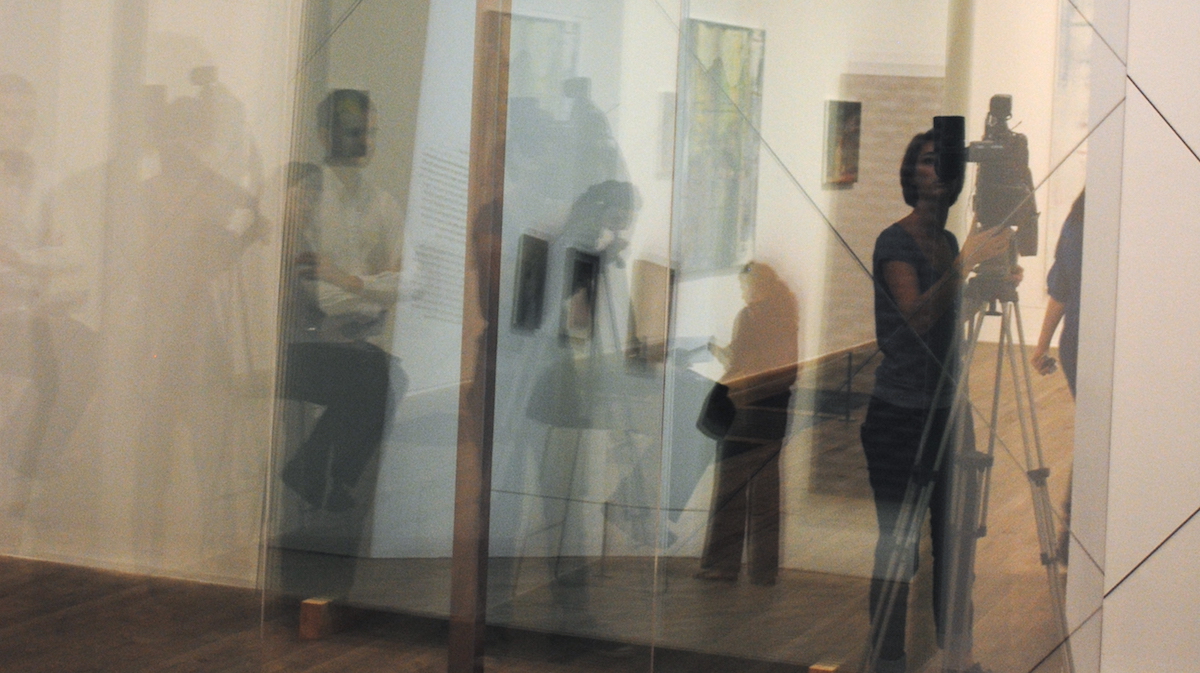In the annual jostling for dominance amongst major institutions offering an M.A in Photography, Westminster usually fares pretty well. On the occasion of this year’s cohort, however, it has to be said that safety and convention have won out at the expense of creativity. This is, in a way, no reflection on either the course or the staff, but more on the structure of a course that encourages, (for lack of a better way of describing) a more ‘Photographic’ approach to fine art photography compared to others. Conceptual Documentary seems to be the main mode here, with liberal sprinklings of landscape, yet to achieve a project of this kind successfully, and more importantly with depth, takes the time and gestation these students just do not have. Within a more arts school type institution, where the emphasis is on developing individuality in a quickly accessible form, and in which photographers mingle and compete with other disciplines, there is more scope for completed, polished work by the time of a graduate show. Bearing this in mind, it might be best to approach lot of the work on show here as the beginnings of, as opposed to, completed projects.
The first things one notices when one enters the show are that Ambika is a great space, way too much work has been mounted on foam/board/aluminium without frames, and that some of the work is worryingly naïve. Upon closer inspection, however, one does get the sense of an overall course ideology based on accomplished technique and a resistance to flashy, contemporary techniques. This is highly commendable, but with such a distinctive space at their disposal, a lot more thought might have gone into the presentation of the work. As mentioned before, the dominant style is ‘Conceptual Documentary’, with themes of migration and the effects of economic migration recurring across several students’ work.
First to impress with his seductive, stark imagery is Basil Al-Rawi with three images from his project ‘Facade’. In a novel approach to the Irish housing crisis, Al-Rawi has created stark, monochromatic images of the hoardings surrounding many of the aborted construction sites littering the nation’s landscape. Topographical in approach but modernist in aesthetic, these hoarding images do seem to document a void, like looking over the hull of a shipping tanker. In some instances, the stock imagery of waspish, aspirational living (a dark sub-genre in itself) that adorns the fences to these once potential new-builds, is included to heighten cruel irony. Al-Rawi, arguably the strongest on show, has found a way to match visual strategy with a political message.
Similar is the work of Jennifer Kover’s ‘Strategies for Survival’. Abstract images of what may be canal banks, but definitely something in decay, document small amounts of vegetation fighting the gradual, destructive ageing of their surroundings. These sprouts and buds offer renewal in amongst the dying stone, and was, according to Kover, a way for the artist to mediate the grief at having lost a close friend. A moving project.
India Lawton’s burning and scratching of family photos in ‘Scars’ is something seen before, but well done and presented. There remains an appeal to the use of found imagery but this will, one day, fade and it will be in this kind of personal approach that any vigour will remain. Jaehoa Park’s aptly named ‘Obsession, in which the artist has collections of found bus tickets and hairpins amongst other things, and then photographs them, is, again, well executed if not novel.
The strongest work apart from Al-Rawi is Vera Dohrenbusch’s elegant landscape work in ‘As I Walk Along The Air Cracks’. Black and white imagery of muted landscapes and nocturnal urban scenes, these are ‘classic’ but evocative, and expressive of a deeply instinctive feel for the image. These photos last, and though they may not be the most immediately noticeable, they should not have been curated away from the prominence. Perhaps such positioning was due to the vagueness of the project, a kind of meditation on landscapes freed from urban associations, but in terms of talent, this is classy work.
There are many other works to see of course, and most would likely disagree with my take, but relative to the previous Westminster M.A shows, and the particularly strong work at the R.C.A this year, one can’t help but feel this course needs to take a few more risks. It will be interesting to see, with impending fees, where more demanding (and indebted) students choose as the best place to launch their careers. Fostering the long term development of its cohort, as Westminster does, is absolutely the right approach for a course to take, but can be, unfortunately, a harder sell.
MA Photographic Studies Degree Show 2012: Voice of the Grain at Ambika P3,
5-9 September.

